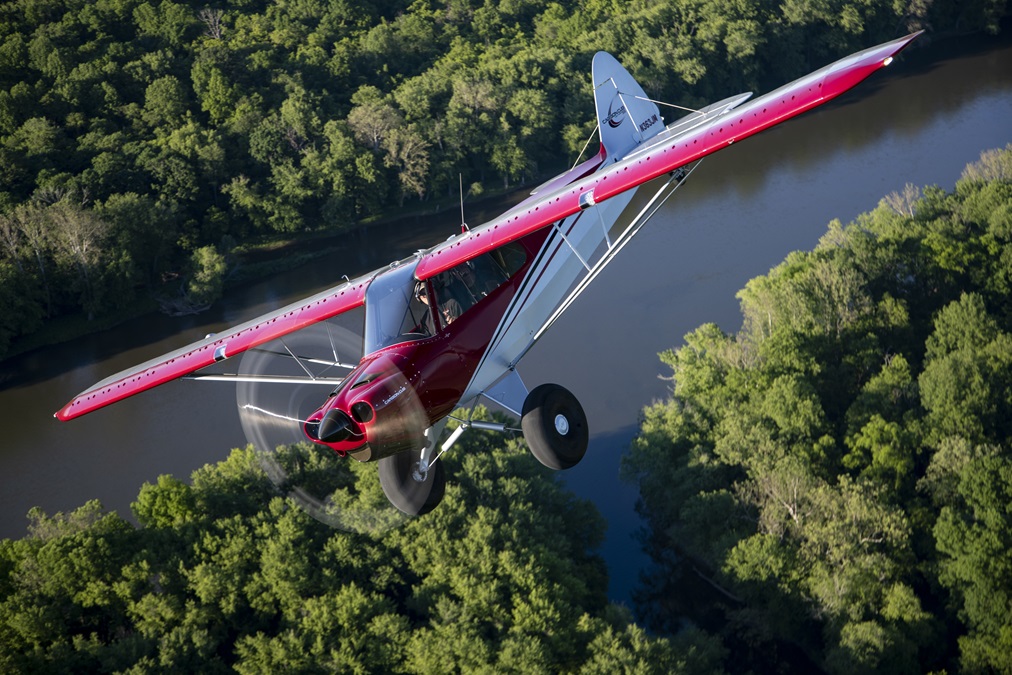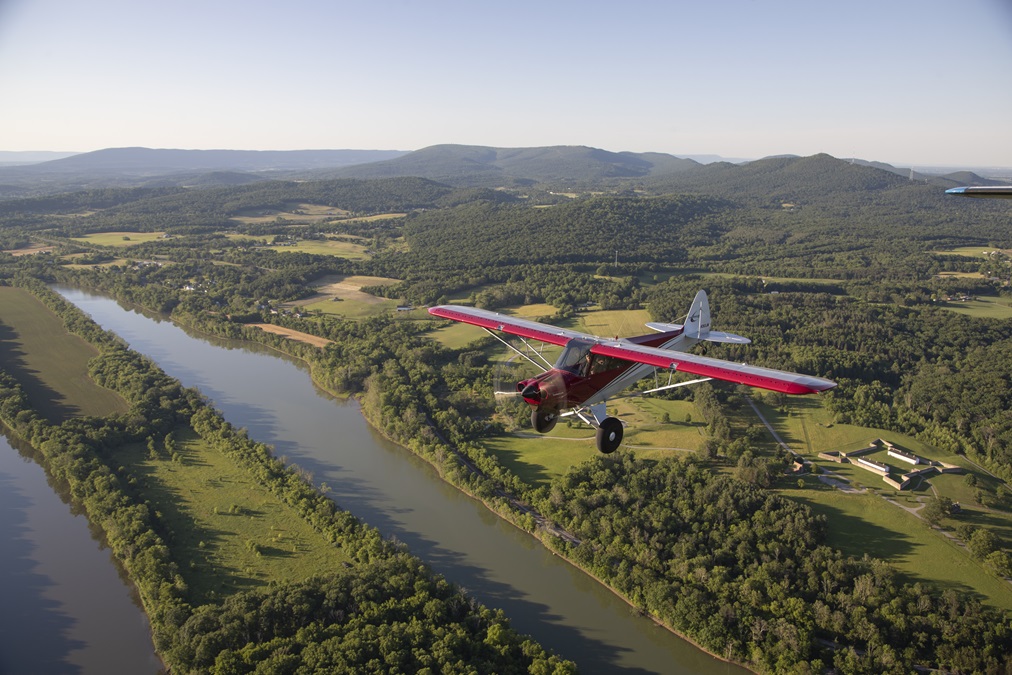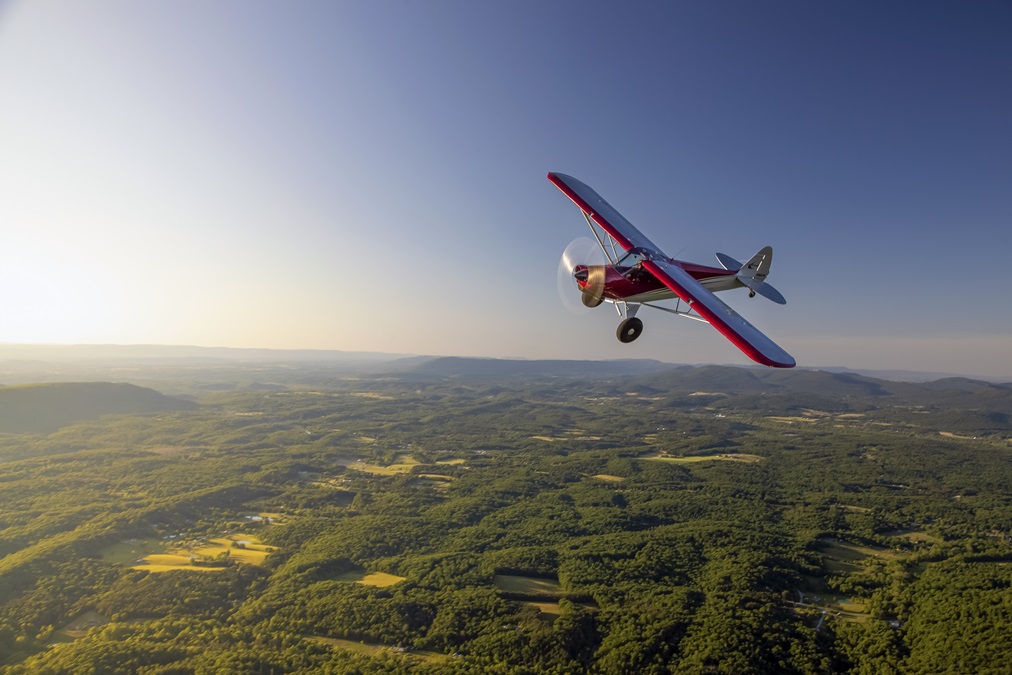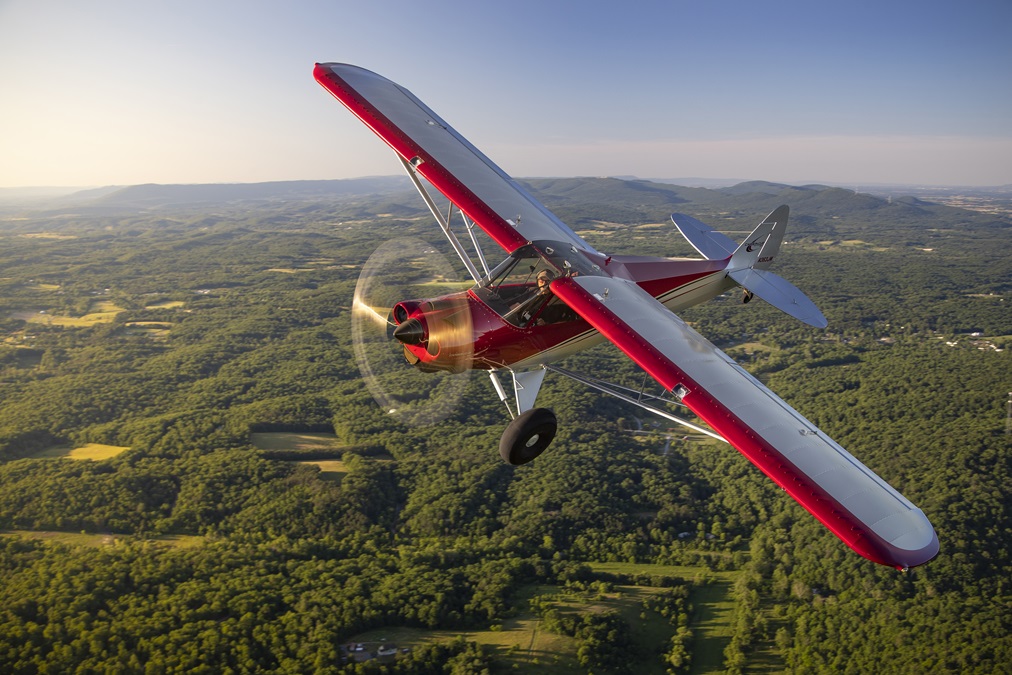Transcontinental flight training
A student and instructor cross the Continental Divide—and a personal one
The low point in our marathon cross-country flight training experiment happened before the trip even started. Dave Flournoy, a student pilot and new owner of a CubCrafters Carbon Cub, and I were standing outside of the company’s headquarters in Yakima, Washington, getting ready to begin our 2,000-nautical-mile journey to the East Coast.
Flournoy, 66, had recently retired from the high-tech industry, moved to Maryland, and started learning to fly. He jumped into the deep end of the aviation pool by buying a Carbon Cub after just five hours of flight training and intended to learn in the muscular tailwheel airplane made for the backcountry. That’s a tall order, but it seemed in character for Flournoy. He drives a Jeep with knobby tires, likes fly fishing, and his work history consists mostly of succeeding at big, complicated, risky endeavors.
I volunteered to serve as his instructor during this transcontinental flight because I was curious to find out whether such training could accelerate a student’s progress. Flournoy could log about 20 hours of dual instruction during our eastbound flight—enough to satisfy many of the requirements for a future sport pilot or private pilot certificate. It seemed like an idea worth exploring.
But in the Yakima parking lot, our discussion inevitably turned to news, then politics, and the state of the world, and it quickly became obvious that we belong to warring tribes. We found each other’s opinions abhorrent, simplistic, inconsistent, and illogical. If this disagreement had taken place on Facebook, we’d have simply unfriended each other. But the reality of our situation required spending the next three and a half days together in close confines. We’d have to communicate, cooperate, and even trust each other—and I wasn’t sure anymore that that was even possible.
But the reality of our situation required spending the next three and a half days together in close confines. We’d have to communicate, cooperate, and even trust each other—and I wasn’t sure anymore that that was even possible. Brad Damm, CubCrafters vice president for sales and marketing, mercifully appeared and ended our dead-end conversation by introducing us to Flournoy’s airplane. It was a gleaming 2015 model with about 200 total flight hours and looked absolutely pristine—but my heart sank when I saw its oversized 29-inch tundra tires. That soft rubber is wonderful for gravel bars and muddy pastures, but the big wheels are incredibly draggy, and they’d reduce the already slow airplane’s top speed about 10 percent. Increasing the power could make up for some of that lost speed, but that would raise fuel consumption in an airplane that only held 24 usable gallons, and we had vast distances to cross.
Damm reviewed the logbooks and paperwork with us, and everything seemed in good order. Then he showed Flournoy a cardboard box with autopilot servos in it, and he explained that the previous owner had had the airplane’s autopilot partially removed.
I seldom swear, but that news brought out the F bombs.
Flournoy had assured me that his airplane had an autopilot because that’s what CubCrafters had told him. Damm apologized and said CubCrafters would pay to have it reinstalled when we got home, or we could wait in Yakima for two days and then have one of their technicians do it. But if we stayed, we’d miss a narrow window of good weather across the Rocky Mountains—and I was unwilling to wait.
The lack of an autopilot meant Flournoy would have to hand fly—and that’s exhausting, especially for a student pilot. He wouldn’t be able to concentrate on higher-order tasks such as reading maps, learning avionics, and using aviation apps to monitor weather, or evaluate alternate routes and airfields.
The only solution was for me to become the autopilot.
Starting the trek
We took the airplane for a local orientation flight that evening, and it flew beautifully. Slingshot acceleration; an express-elevator climb; excellent control harmony, stability, and responsiveness; outstanding visibility; comfortable seating; thoughtful ergonomics; and slow-flight characteristics that seemed closer to a helicopter than a fixed-wing airplane.
The VFR panel was smart and elegant with a Garmin aera 796 linked to a GDL 39 ADS-B receiver. The 796 did double duty as a moving map and it could be made to show attitude instruments. An Electronics International CGR-30P graphical engine monitor and fuel computer kept a close watch on engine parameters, and a Trig radio and transponder provided communications and ADS-B Out. An analog altimeter and airspeed indicator filled out the minimal but capable carbon-fiber panel.
We searched the hillsides around Yakima for wild horses, then made a few takeoffs and landings at a nearby grass airstrip. The airplane was a blast to fly, exuded quality, and inspired confidence.
We also closed our unpleasant political conversation by agreeing to avoid the subject entirely during the cross-country flight. Done.
Plan C
A sunny dawn and calm winds made for an easy departure on our first leg over the mountains to Missoula, Montana.
I wanted to confirm the heavily burdened airplane’s ability to climb, check its actual fuel consumption against the readings from the fuel computer, and catch a tailwind. Yakima Tower coordinated VFR flight following and we headed northeast at 11,500 feet in air so still we didn’t need an autopilot.
Dual electronic ignition allows aggressive leaning of the 180-horsepower engine, and that means excellent fuel efficiency. At 2,300 rpm and an indicated airspeed of 90 miles per hour, fuel consumption was just 5.5 gallons per hour in cruise. That meant we could fly for three hours and still land with adequate VFR fuel reserves.
We followed Interstate 90 eastward over the snowy peaks, and Flournoy seemed thrilled. “I’m looking forward to flying this airplane well enough to come back to this part of the world and explore the backcountry,” he said. “If we had fishing rods in back, I’d be tempted to do that right now.”
Placid air made for the smoothest crossing of the Continental Divide I’d ever experienced. We continued east to Lewistown and Miles City, Montana, where bumpy air finally caught us. We also discovered that the front seat of the Carbon Cub is a lot warmer than the shaded, somewhat drafty back seat.
Our final landing that day was our first on grass: the smooth, wide, turf Runway 35 at Mobridge, South Dakota, which perfectly suited the airplane’s marshmallow tires.
While I acted as a human autopilot, Flournoy figured out ForeFlight on his iPad. By the end of the day, he was evaluating and choosing airports based on their runway lengths and orientations, fuel availability, and reported and forecast weather.
“I’ve always enjoyed solving problems and spent most of my career doing that in one form or another,” he said. “I’m beginning to see that cross-country flying is that kind of puzzle. You’ve got to have a Plan A, a Plan B, and a Plan C—and I’m fine with that.”
Stick hog
Day Two started with an unanticipated problem we could do nothing about: morning fog. It was localized and patchy, but the thickest part sat squarely over Mobridge. Our planned 7:30 a.m. departure was delayed two hours.
When the fog finally lifted, we crossed into western Minnesota in good weather, but rain and low ceilings awaited us. We landed on an immaculate turf runway at Redwood Falls, Minnesota, in marginal VFR conditions, then followed the Mankato River at about 800 feet agl to sunshine and higher ceilings in Wisconsin. Unfortunately, the improving weather brought headwinds and choppy, humid air that slowed our progress as we plodded toward Lake Michigan. A pop-up thunderstorm over Kenosha meant a last-minute diversion to Burlington for fuel and a short rest. Then, the highlight of the day was a smooth sunset flight past the Chicago skyline at 1,000 feet agl.
“I’ve been to Chicago countless times on business,” Flournoy said. “But I’ve never seen the city from this perspective. I can’t believe what we’re doing is legal. It feels like we’re getting away with something.”
The next morning, we took off from the Porter County Airport in northern Indiana just after sunrise—and barely in time. A series of isolated but large thunderstorms was moving north through the Ohio Valley, and we were barely ahead of them. We landed at Mansfield, Ohio, in winds gusting beyond 20 knots, and I made the landing with Flournoy following through on the controls.
The most important trait for a tailwheel pilot isn’t perfect technique, I told him. It’s a scrappy attitude. When the wind pushes you, use every bit of control authority you’ve got to push back.
It had been a successful ferry flight. The airplane performed brilliantly and seemed no worse for the wear. But whether it had been helpful from a flight training standpoint wasn’t as clear.We flew east through the Class B airspace in Pittsburgh, Pennsylvania, at 7,500 feet, but we couldn’t quite make our Maryland destination without a final fuel stop. Flournoy selected Somerset County Airport, an excellent pick due to its turf Runway 14, aligned with a gusty 26-knot wind that shortened our ground roll to 50 feet. Our takeoff was, perhaps, even shorter.
We stayed below the clouds and followed the Potomac River through the jagged, lush valleys, spotting private airstrips and potential future landing sites along the way. “This is the kind of flying this airplane was meant to do,” Flournoy said. “This is the kind of flying I aspire to do.”
The Potomac flowed into the Shenandoah Valley, and we hopped a couple more ridges during our descent into Frederick, the new home for Flournoy’s airplane.
More that unites us
It had been a long and demanding trip. We’d flown as high as 13,000 feet over the Rockies and as low as 600 over the Plains. Visibility had ranged from 150 miles in Montana to less than five in Minnesota.
It had been a successful ferry flight. The airplane performed brilliantly and seemed no worse for the wear. But the student only made a half-dozen takeoffs and landings during the long trek, so that didn’t to much to advance his immediate goal of an intitial solo flight. Still, Flournoy bonded with his airplane during three long days in the saddle. He saw how capable it was in terms of short fields, high mountains, and long endurance. He also came away full of enthusiasm for future adventures.
“I’d never been on a cross-country flight in a small airplane of any kind, so I found it fascinating,” he said. “It’s made me even more motivated to fly. I’m convinced I bought the right airplane. And I’m interested in learning all aspects of aviation—not just what’s required to pass a test.”
For me, the most refreshing part of the trip was being reminded that two people with opposing views can come away from a shared journey with mutual respect. We made a deal to avoid politics and stuck to it. He didn’t change my opinions, and I’m sure I didn’t alter his—but we treated each other with courtesy and kindness—and we had some laughs. It was a needed reminder that there’s a lot more that unites us as Americans, and aviators, than divides us.








